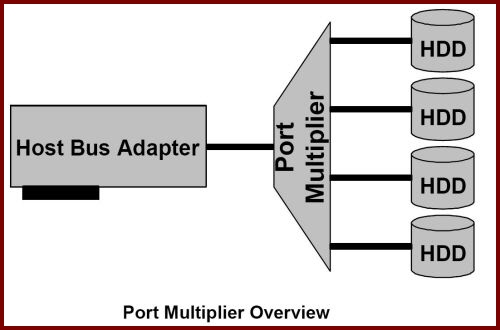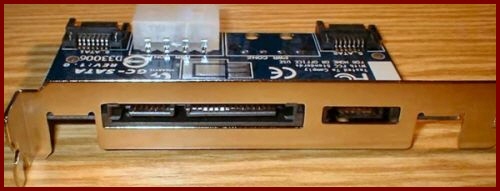The Serial continues…
The next version of Sata - Sata/300, also known as Sata II - will push the serial interface well beyond Pata, doubling maximum throughput to 300MBytes/sec. The physical-layer specification for Sata/300 was ratified in July 2004, and product is now starting to arrive.But there’s more to Sata II than raw performance. Other improvements are intended to increase throughput using more subtle means. Perhaps most important is Native Command Queuing (NCQ).
The idea of NCQ is that it boost performance by allowing a drive to optimise the order of the work that it carries out – ensuring that the heads travel across the drive’s platters in the most efficient way for the fastest read/write speeds.
NCQ is already found in some Sata 1drives, including models from Seagate and Western Digital but WD’s Raptor uses a derivative of the earlier Pata version, and it’s not yet clear how compatible it will be with the full Sata II version.
Some Sata controllers are also available with NCQ support – including Pacific Digital’s Talon ZL series and HighPoint’s 1820 adapters – and it’s built into Intel’s integrated ICH6R controller, too.
However, the arrival of the Serial ATA II Extensions, will mean that NCQ becomes a standard feature of all Sata controllers. Sata II is also meant to bring about the hot-plug capabilities promised with the original version.
Also significant is the Port Multiplier function. This enables one Sata connection to handle up to four drives. As well as allowing multiple drives to be run from a single connection, it allows connections to be routed to a more convenient location and makes cabling tidier.

So, for instance, it might use one Sata/300 cable to route to a system-box backplane supporting up to four hot-plug hard disks. Supporting chipsets are already in production from companies such as Marvell (www.marvell.com), and the Port Multiplier will support Sata/150 devices as well.

fragile cabling system as for internal devices
Much like USB and FireWire, Port Multiplier also makes it possible to use an external hub for connecting devices – and it can do this in tandem with a standard configuration for external cabling.
A few companies already offer adapters with external ports, notably HighPoint, but this uses the fragile internal connectors and is non-standard. Sata cabling has been widely criticised for its lack of robustness.
Port Multiplier 1.1 uses something called asynchronous notification, which comes from the Digital 1.1 specification. This allows the hub itself to tell the Sata host controller when devices are detached, making hot-swapping more seamless.
But a lot of Sata II enhancements are intended primarily for servers. Not so long ago, network devices such as storage servers used SCSI exclusively but the low cost of Sata disks, plus their higher capacity, has led to quite a few system builders releasing rack devices using Sata instead.
The Port Selector feature in Sata II allows a device to switch between multiple ports. This provides cabling redundancy – if one connection goes down, Port Selector can simply switch to another. Sata II also allows Sata channels to be aggregated into multi-lane pipes to increase bandwidth – again useful for routing from a host adapter to an external hub.









